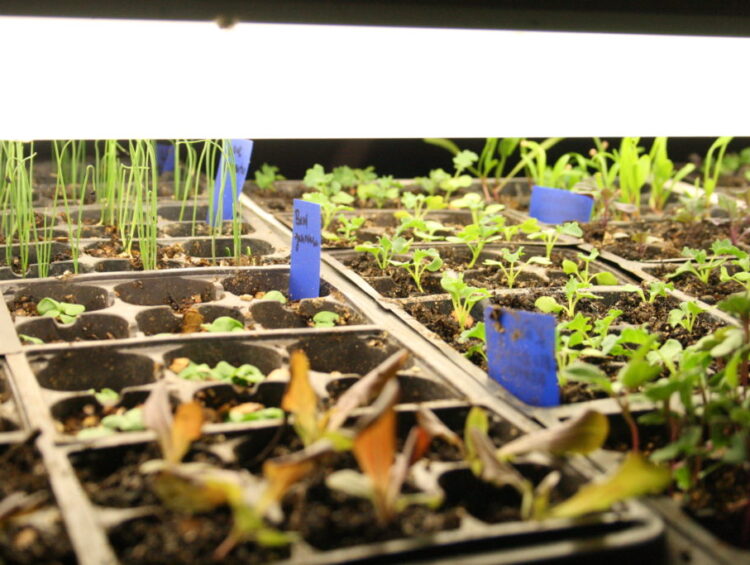The journey of a plant from a tiny seed to a flourishing sapling is one of nature’s most fascinating transformations. However, to ensure that this transformation occurs smoothly and efficiently, especially in the controlled environment of a nursery, there are numerous steps and practices that one needs to consider. By leveraging the benefits of a nursery planter and adopting the right strategies, this process can be optimized to its fullest.
Understanding the Importance of a Nursery Planter
A nursery planter is not just a container for your plant; it’s an environment. Its design, material, and size can significantly influence how well your seeds germinate and grow.
- Provides Controlled Environment: For seeds to turn into healthy saplings, they need an environment where factors like moisture, temperature, and light are regulated. A nursery planter provides this controlled setting.
- Enhances Root Development: With the right depth and space, nursery planters enable roots to spread out evenly and deeply, ensuring stable growth.
- Protection from External Threats: Be it pests, heavy rains, or extreme sunlight; nursery planters can protect young plants from many potential threats.
Steps to Maximize Growth in a Nursery Planter
To ensure that your seeds transform into robust saplings in your nursery planter, follow these key steps:
Step 1: Choosing the Right Nursery Planter
Selection Factors:
- Material: Opt for nursery planters made of breathable materials like terracotta or fabric pots. This promotes root aeration.
- Size: Depending on the plant species, choose a size that allows the roots to grow deep and wide.
- Drainage: Ensure your nursery planter has adequate drainage holes to prevent waterlogging.
Step 2: Preparing the Soil
Components to Consider:
- Good Quality Potting Mix: This ensures a balanced blend of nutrients.
- Organic Compost: Boosts microbial activity and provides additional nutrients.
- Perlite or Vermiculite: Improves soil aeration and drainage.
Step 3: Proper Sowing of Seeds
Sowing Tips:
- Depth: Ensure you sow the seeds at the right depth. Too shallow and they might not germinate; too deep, and they might get deprived of light.
- Spacing: Overcrowding can stunt growth. Ensure seeds are spaced adequately.
- Labeling: Especially if you’re growing multiple plant species, label each nursery planter.
Step 4: Watering Practices
Watering Guidelines:
- Consistency: Maintain consistent moisture without making the soil soggy.
- Water Quality: Use clean, chlorine-free water. Rainwater is ideal.
- Watering Time: Mornings are optimal as it prevents prolonged dampness which can lead to fungal diseases.
Step 5: Monitoring Light and Temperature
Light and Heat Essentials:
- Direct Sunlight: Young saplings benefit from direct sunlight but monitor to prevent sunburn.
- Temperature Regulation: Ensure the nursery planter’s location isn’t subjected to extreme temperature fluctuations.
Maintenance and Monitoring
Once you’ve planted the seeds, your role isn’t over. Vigilance and timely interventions can make a difference.
Pests and Diseases
Regularly check your nursery planter for signs of pests or diseases. If you detect any, use organic or environmentally friendly treatments. Avoid harsh chemicals, as they can damage young plants.
Pruning and Thinning
As the seeds germinate and start growing:
- Thinning: This involves removing weaker seedlings, allowing the strong ones to thrive.
- Pruning: Snip off dead or diseased parts to ensure the plant’s energy is directed to healthy growth.
Transplanting
Once the plant outgrows its nursery planter:
- Timing: Transplant before the plant becomes root-bound.
- Procedure: Gently remove the plant, ensuring minimal root disturbance.
Conclusion
From the moment a seed is sowed in a nursery planter to its evolution into a vibrant sapling, the journey is intricate and requires careful nurturing. By selecting the right planter, ensuring the best soil mix, and adopting optimal planting techniques, you can set the stage for robust growth. Through diligent maintenance and monitoring, you can witness the magnificent transformation of a tiny seed into a healthy sapling, ready to be transplanted and grow further into a mighty plant.





